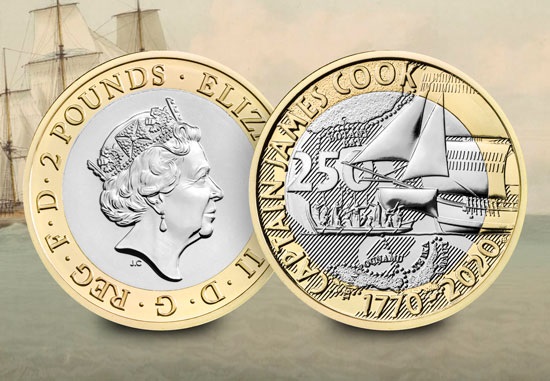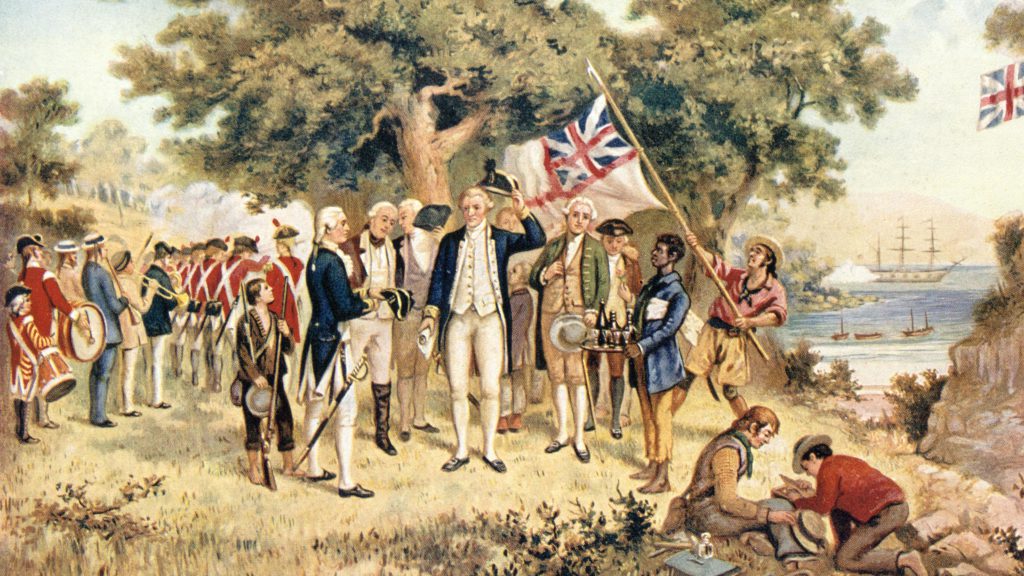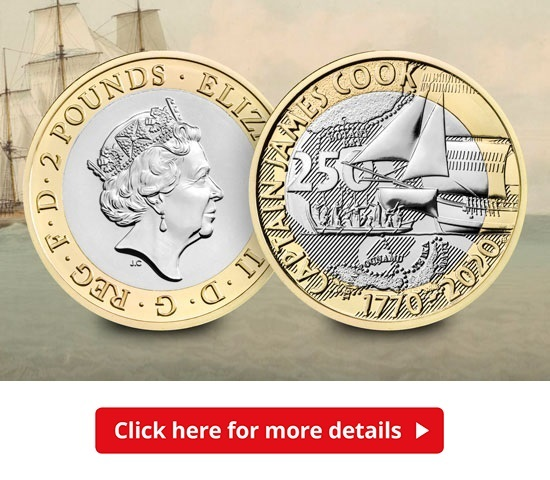Uncategorised
Spot the difference! Variations in the 12 sided £1 explained.
A common query we’ve been hearing at Change Checker HQ comes from people asking about variations in their 12 sided £1 coins.
Having read David Groom’s fascinating articles in the April and May issues of Coin News, we’ve found the key facts which explain these variations, what to look for and why they might have occurred.

We know that of the 1.5 billion 12 sided £1 coins struck to replace the old round pound, roughly half a billion are dated 2016.
Of course, having such a high mintage figure must lead to varieties in design and quality of striking, however in the Coin News examination of just 40 randomly selected 12 sided £1 coins, an extraordinary number of varieties appeared…
Edges
Perhaps the most talked about variation with the 12 sided £1 is the milling on the edge of the coin, with ‘lefties’ being a common error in the milling process.

Variations showing milling to the right. Credit: Coin News

Variations showing milling to the left. Credit: Coin News
Obverses
Groom’s article suggested four clear variations can be found on the obverse of the coin, including position of the design and text.

Variations in the gap of the ‘T’ relative to the edge of the inner ring. Credit: Coin News

Variations in the position of the truncation relative to the edge of the inner ring. Credit: Coin News

Variations in the tip of the diadem relative to the edge of the inner ring. Credit: Coin News

Variations in the gap of the ‘D’ relative to the inner ring. Credit: Coin News
Reverses
Groom also highlighted the four clear features of difference for the reverses of the new £1 coins.

Variations in the gap of the ‘D’ relative to the inner ring. Credit: Coin News

Variations in the gap of the ‘DP’ relative to the inner ring. Credit: Coin News

Variations in the position of the leek relative to the edge of the inner ring. Credit: Coin News

Variations in how the rose is intersected. Credit: Coin News
Misalignment
One of the most common variations seems to be misalignment of the coins, particularly where the outer and inner sections do not align properly.

Variations in alignment. Credit: Coin News
Dates
We have spoken before in our blog about the dual-dated £1 coins, with one such coin being valued at £3,000.
Groom also mentions that many examples of the 2016 pound coin have the date numbers very poorly struck, making the date hard to read.

The date on some 2016 £1 coins have been poorly struck. Credit: Coin News
Royal Mint trial coins
Trial coins are issued when new coin specifications are being tested, but they should not enter circulation.
These feature the words ‘The Royal Mint’ and ‘Trial Piece’.

Credit: eBay: Rare £1 coin – new 12-sided trial coins sold for £500
Whilst there are clearly a number of variations to be found in the 12 sided £1 coins, Coin News suggests that these may arise from off centre striking, or be due to the different characteristics from the two metals of the bimetallic coin.
Auction sites such as eBay may have sellers claiming these as ‘error’ coins, with listed prices rising to hundreds or even thousands of pounds, but for us Change Checkers, finding these variations in our coins is what makes collecting that much more interesting.
Many of you have been in touch telling us about the difference in your 2016 and 2017 12 sided £1 coins. Have you spotted any of the above variations in your coins?
– Credit ‘Up close, the new 12 sided £1 coin’ – David Groom, Coin News, April and May 2018
If you’re interested in coin collecting, our Change Checker web app is completely free to use and allows users to:
– Find and identify the coins in their pocket
– Collect and track the coins they have
– Swap their spare coins with other Change Checkers
Sign up today at: www.changechecker.org/app
Embark on a Voyage to Discover the NEW £2 Captain Cook Coin Collection
In the summer of 1768, British explorer, Captain Cook set sail for the ‘Great South Land’ on his famous Voyage of Discovery.
250 years on, The Royal Mint announced they would be commemorating Captain Cook’s extraordinary travels with a unique coin series to feature three beautifully designed £2 coins.
This is the first time Captain Cook has appeared on UK coinage and today, the VERY LAST coin in the collection has been released, the 2020 UK Captain Cook £2.

His famous ship, HM Bark Endeavour features on the design and, just like a secret map, when all three coins in the collection are placed together the design can be seen as a whole.
The first coin was released in 2018 and saw huge popularity from Collector’s and explorers alike!
Now the final coin has been released, collectors can finally complete this incredible £2 series.

Voyage of Discovery
Cook’s great expeditions to the South Seas had a hidden agenda – carrying secret orders from the British Admiralty who hoped for him to discover ‘a Continent or Land of great extent’ to take possession of ‘in the Name of the King of Great Britain’.
On each epic journey, Cook made spectacular discoveries which expanded the understanding of the world beyond known horizons.
Artefacts such as maps, logs, paintings and journals recorded during Cook’s voyages revealed a new and exciting world, transforming the European view of the Pacific Ocean.
By 1770, his first voyage aboard the Endeavour brought Cook to the southern coast of New South Wales and from there he continued northwards, charting Australia’s eastern coastline.
On the 22nd August 1770, Captain Cook fulfilled his mission and claimed the eastern Australian continent for Great Britain.
However, the intrepid voyager did not stop there. He embarked upon two more expeditions in 1772 and 1776 to find an inhabited southern continent in the Antarctic Circle and a passage linking the Atlantic and Pacific Oceans.

Secure the BRAND NEW 2020 Captain Cook £2 coin
You can now own the FINAL £2 coin in the three-coin-series commemorating Captain Cook’s Voyage of Discovery.
Discover the Treasure Hidden in your Holiday Change!
Summer is right around the corner and as we start thinking about jetting off on holiday for some fun in the sun, it’s time to organise that all important foreign currency.
But have you ever thought about checking your holiday money for hidden treasures and rare coins?
Having recently returned from a two week holiday in Japan, I’ve got foreign currency on my mind and a few leftover Yen in my pocket!
Despite the growing use of credit and debit cards in Japan, the country still relies largely on cash for daily spending, making coins an indispensable aspect of living – although it did take me some time to feel comfortable handling their 500, 100 and 50 Yen coins! Other denominations of Japanese currency include 20, 10, 5 and 1 Yen coins and 1,000, 5,000 and 10,000 Yen notes, with 10,000 Yen converting to roughly 65 Pounds.
Since returning to England, I’ve begun to wonder what some of these coins might be worth…
The 5 Yen coin is said to be the luckiest of all because of the way the Japanese pronunciation of the coin sounds – “Go-en” –which is the same as the word for destiny in Japanese and the expression for good luck.
When visiting the many Shinto shrines around the country, I noticed people giving 5 Yen coins as donations, and souvenirs of the coin were available to buy, decorated with ribbons and chains through the handy hole in the middle, which can be used to string many coins together.

Lucky 5 Yen coins at a Japanese Shinto shrine. Credit zoomingjapan.com
Roughly converting to a mere 3 Pence, these coins have sold online for much higher than their face value. If dated before 1959 they could be worth about £7 if in uncirculated condition. Coins dated 1957 are scarce and could be worth around £20 in uncirculated condition.
Japan might not be everyone’s typical holiday location, but you too could discover a hidden treasure when you return from your next holiday, with many European, US and Australian coins proving to be very collectable.
Lucy Mackenzie, our Head of Numismatics says, “I would recommend they do their research before they travel to their destination and pay close attention to their change as they could find a rare coin or mis-strike.
“The minting process is never completely exempt from human error and mistakes happen, when it comes to coins these mistakes can often be worth a lot money to sharp-eyed collectors.”
So which holiday destinations do we deem to be the ‘hot spots’ for rare coin hunting?

Currency from around the world.
Europe
Europe is certainly a popular and convenient location for us Brits abroad, but before you think about getting rid of those Euros when you return, keep your eyes peeled for the special edition 2 Euros which have been sold for up to fourteen times face value!
Most sought after editions include the 2011 2 Euro Europa from Greece, the 2008 2 Euro Human Rights coin from Finland, 2005 Austrian state contract coin and the 2007 Monaco 2 Euro featuring Grace Kelly which has become one of the rarest commemorative coins, selling for roughly £1,100.
You might also be lucky enough to discover old tender in Europe on your next holiday. These coins were replaced by the Euro in 1999 but could now achieve an easy profit.
Look out for Irish coins from the 1980s and 90s which have been valued for thousands of pounds at auction. The 1985 copper-coloured 20p and the 1992 10p are also ones to hunt out and have both been sold at $5-$10,0000!

2007 Monaco 2 Euro, one of the rarest commemorative coins. Credit: fleur-de-coin.com
America
For a hop across the pond to America, you could get your hands on rare quarters such as the 2004 Wisconsin extra leaf high quarter, which eBay says is the most sought after of all due to an extra cornstalk leaf on the design being struck by mistake. This small error means that these coins are being sold online for up to £125!
Also look out for the 2005 Minnesote Doubled-die Extra Tree Quarter and the 2000 South Carolina off-centre error quarter to add to your rare coins collection when on your trip stateside.

2004 Wisconsin State Quarter with extra leaf. Credit: usacoinbook.com
Australia
If you’re travelling farther afield, the Australian mule could make you a tasty profit of $1,000 and has been sold for thousands online, with one selling for $2,742 at auction in 2016.
The production error occurred in 2000, resulting in a coin that was thicker than usual, with a double rim on the Queen’s side. If this treasure turns up in your foreign change, it’s definitely worth keeping hold of!

Australian 1 Dollar mule, selling for £1,000. Credit: dailymail.co.uk
I’ve certainly admired the beauty of the coins I’ve found on my travels and always keep hold of a few as mementos, but it’s also worth being extra vigilant and checking your foreign currency to see if you can find any hidden gems!
Have you found any rare coins on your trips abroad? Let us know in the comments below.

